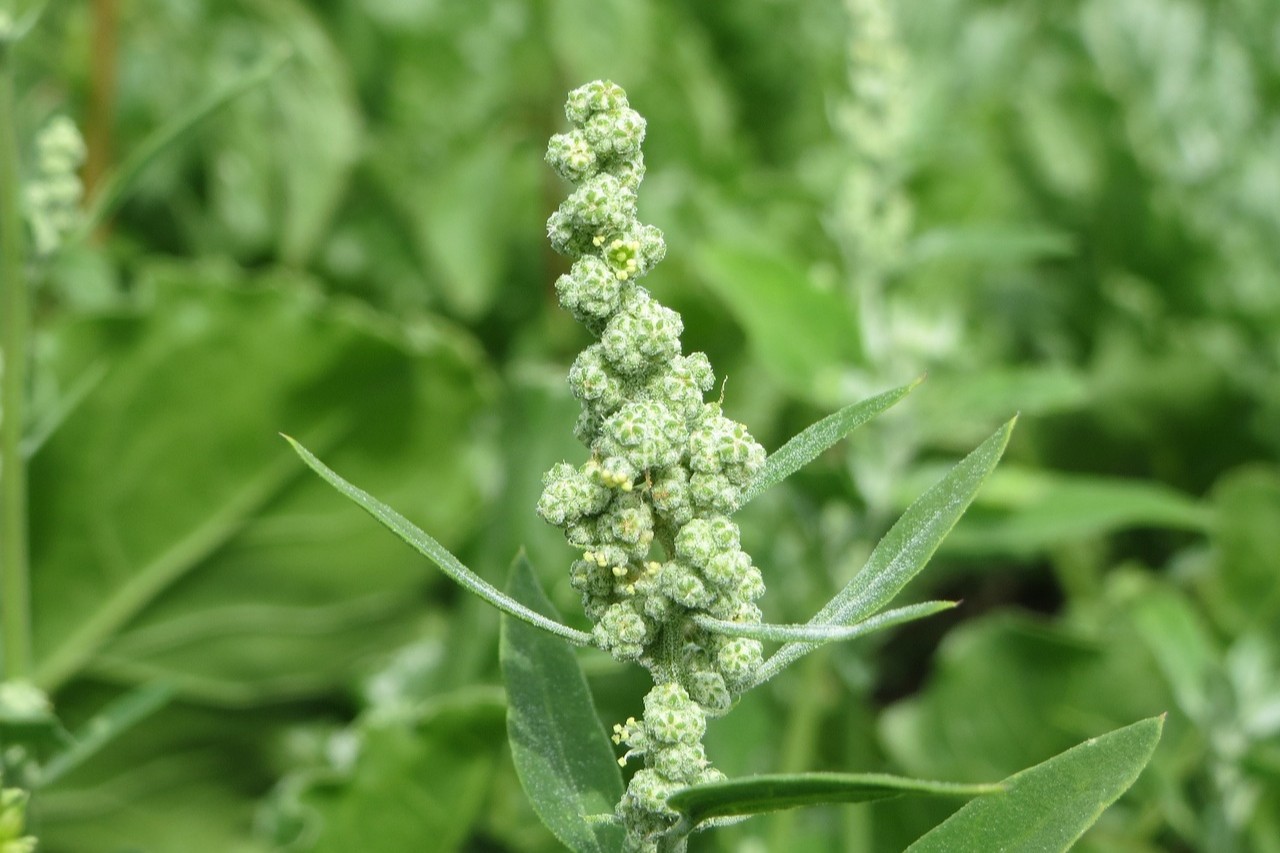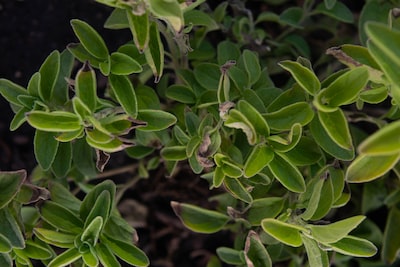Growing Lambsquarters for Fresh, Organic Snacking

Growing Lambsquarters
Growing lambsquarters brings tasty, nutrient-rich greens into your garden effortlessly. Sow these hardy seeds directly into loose soil, water lightly, and watch them sprout into delicious organic snacks. Lambsquarters, abundant in vitamins and minerals, thrive easily even for beginners—read on to savor nature's wild spinach alternative right in your backyard.
Cheatsheet: Quick-Start Guide to Lambsquarters Greens
🌱 Optimal Growing Conditions
- Soil: Loamy, well-drained, pH 6.0–7.5
- Sun: Full (6+ hours)
- Temperature: 50–80°F / 10–27°C
- Water: Keep moist, not soggy
- Tip: Grows wild—often volunteer in gardens
🌿 Planting & Care Steps
- Scatter seeds on bare soil in early spring or fall.
- Press gently, do not cover; needs light to germinate.
- Mist soil daily until sprouting (7–14 days).
- Thin to 6–8 in / 15–20 cm apart.
- Harvest young leaves when 4–8 in / 10–20 cm tall.
- Pinch tops to encourage branching and leaf production.
🧰 Tools and Products You'll Need
- Lambsquarters seeds or young wild plants
- Water mister or fine spray bottle
- Hand trowel
- Harvesting scissors
- Mulch (optional for moisture retention)
💡 Nutrition & Health Boost
- Twice calcium and iron of spinach
- Rich in vitamins A, C, and K
- Contains protein, fiber, and antioxidants
- Foraged greens promote self-sufficiency
⚡ Quick Tips for Snacking
- Rinse leaves to remove saponins (natural coating)
- Eat raw, toss in salads, or blend in smoothies
- Harvest young; older leaves can be cooked
🌎 Fun Fact
- One plant can yield 75,000 seeds—vigorous self-seeder
The Underappreciated Charm of Lambsquarters—My Accidental Discovery
I first stumbled across Lambsquarters (Chenopodium album) years back, wholly by accident. Wandering barefoot through my somewhat neglected veggie plot, I noticed these graceful weeds thriving alongside carrots and kale.
Curiosity nudged me into picking a handful. It tasted surprisingly like a fresh, slightly nuttier, earthier spinach—delicious, approachable, and strangely addictive.
Turns out, Lambsquarters sprouts freely, grows eagerly, and tastes exceptional—perfect for effortless home gardening.
Why Lambsquarters Deserves a Spot in Your Garden
Too often dismissed as just a weed, Lambsquarters packs nutrition rivaling spinach and kale. According to the USDA Nutrient Database, these leaves contain significant amounts of Vitamins A, C, K, calcium, magnesium, and iron—making them a healthy addition to any plate.
"One cup (180 grams) of cooked Lambsquarters provides approximately 73% of your daily Vitamin A needs and 37% of your Vitamin C."—USDA Agricultural Research Service
In other words: snacking on Lambsquarters is akin to popping a multivitamin directly from your backyard, minus suspicious additives.
Simple Steps for Growing Lambsquarters at Home
Thankfully, Lambsquarters thrive effortlessly and require minimal attention from gardeners. Here's my go-to approach for dependable growth:
1. Finding Quality Seeds
If these weeds haven't magically sprouted in your plot before, sourcing seeds online or from specialty organic seed suppliers is straightforward. Fresh, reputable seed ensures vigorous plants.
2. Optimal Planting Conditions
This humble weed tolerates nearly every type of soil, but it especially loves well-draining, fertile ground. A soil pH between 6.0 and 7.5 encourages strong, nutritious growth.
Plant Lambsquarters seeds in early spring when temperatures average around 50–60°F (10–15°C). Plant them shallowly, just ¼-inch (approx. 0.5 cm) deep, spaced six inches (15 cm) apart.
3. Watering and Maintenance
Water lightly but consistently during initial germination—once the plants find their footing, nature typically takes it from there. Rainfall alone usually sustains Lambsquarters gardens nicely unless your summers run particularly hot or dry, where moderate weekly watering does wonders.
4. Harvesting Lambsquarters for Snacking
My favorite part, naturally, is harvesting. Young, tender leaves around two inches (5 cm) long taste best raw—simply pinch them off as needed.
Regular picking encourages new growth, ensuring fresh leaves all season long. Leaves larger than a man's palm offer stronger flavor, so save those for sautéing or adding to soups and stews.
How To Snack on Lambsquarters Fresh from Your Garden
Fresh leaves, mild in flavor but satisfyingly textured, shine brilliantly in salads. Tossed lightly with citrus dressing and nutty grains like toasted quinoa or farro, Lambsquarters bring rustic flair to casual dining.
For quick snacks, wrap fresh, rinsed leaves around little goat cheese dollops or hummus scoops. Simple, addictive—trust me on this.
Managing Lambsquarters Responsibly
Some gardeners voice concern over Lambsquarters' aggressive growth, fearing unwanted garden takeovers. I get it—these charming plants seed abundantly if left unchecked.
Containment is straightforward enough; clip off flowers early to minimize self-seeding, or plant Lambsquarters in designated raised beds or containers to keep them orderly and productive.
Connecting to Gardening Heritage
Interestingly, our ancestors recognized Lambsquarters as anything but a weed. Archaeological digs show North American indigenous peoples regularly consumed these nutrient-dense leaves thousands of years ago.
"Lambsquarters have historically been harvested by Native American cultures for their nutritional value and ease of growth, ensuring sustainable food security."—Native American Ethnobotany Database
Cultivating Lambsquarters offers gardeners a meaningful connection to these ancient traditions, blending historical respect with tasty practicality.
An Edible Weed Worth Celebrating
I'll never forget that initial bite of Lambsquarters from my backyard—a truly enlightening moment in my gardening education. Easygoing, nutritious, and tasty leaves freely available for snacking make this humble weed more than deserving of garden-space.
Once you've grown Lambsquarters yourself, you'll wonder why more gardeners don't celebrate this hardy, delicious, and ancient green.
Frequently Asked Questions About Growing Lambsquarters
What's the ideal growing environment for lambsquarters?
Lambsquarters flourish best in sunny, well-drained locations. They prefer loamy soil but grow heartily even in sandy or clay-rich earth. Offer them ample sunlight and moderate water to watch them thrive abundantly.
How should I start planting lambsquarters?
Directly seed lambsquarters into loose, prepared soil after the risk of frost fades in spring. Scatter seeds thinly and lightly cover them, as these seeds relish exposure to warmth and sunlight for optimal germination.
Do lambsquarters require frequent watering?
Once established, lambsquarters boast impressive resilience. Water regularly during initial growth, but afterward, occasional irrigation suffices. Allow the soil surface to dry slightly between watering sessions to encourage deep root growth.
What's the simplest method for harvesting lambsquarters?
Snip the tender stems and leaves from the top when plants reach about 6–10 inches tall. Harvesting early and regularly stimulates continuous fresh growth, delivering tender greens for your culinary endeavors.
Are lambsquarters prone to pest damage or diseases?
Lambsquarters rarely experience trouble with pests or diseases. However, occasionally, aphids or leaf miners may visit your patch. Combat these intruders effectively by introducing beneficial insects, like ladybugs, and maintaining a balanced garden ecology.
Can I grow lambsquarters in pots or containers?
Absolutely. Lambsquarters adapt beautifully to container gardening. Choose pots at least 8–12 inches deep, filled with rich potting soil, ensuring effective drainage. Regular harvesting keeps the plants compact and manageable, suitable even for urban balconies.
When's the best time to harvest lambsquarters seeds?
Harvest seeds once the plant matures and develops dry, papery seed heads, typically late summer or early autumn. Gently strip off the seed clusters, sift carefully, and store in airtight containers to ensure future generations of vibrant growth.
Growing Lambsquarters means letting go of fuss and embracing what’s already thriving at your feet. These wild greens don’t need pampering—they ask for sunlight, a patch of earth, and minimal attention. In return, you get nutrient-packed leaves that rival spinach for flavor and versatility. Pluck them young for salads, or sauté the mature ones; your taste buds and your body will thank you. If you’re curious about expanding your edible weed repertoire, you might also explore spilanthes or duck potato for even more foraged goodness. No need for expensive seed catalogs—just a willingness to see the value in the overlooked. In the end, growing lambsquarters is about working with nature, eating well, and making the most of what’s already there.
The Homesteader's Take on Growing Lambsquarters
Self-Reliant Nutritional Powerhouse
Lambsquarters boosts food independence with vitamin-rich greens offering higher iron levels than spinach and significant vitamin C, potassium, and fiber content. Add to salads, smoothies, or quick stir-fries for reliable homestead nutrition.
Seed Saving Essentials
- Allow healthiest plants to flower; harvest seeds in autumn by stripping dried seed clusters into paper bags.
- Store dried, cleaned seeds in airtight containers in cool, dark spaces; viable seeds last up to 5 years.
- Average yield per plant: approximately 75,000 seeds per season—ample for sustained self-sufficiency.
Integrated Homestead Pest Management
- Companion Planting: Lambsquarters attracts beneficial insects such as ladybugs, lacewing beetles, and hoverflies, naturally reducing pest populations.
- Chicken Foraging: Allow poultry controlled lambsquarters access; chickens readily consume leaves, keeping plants contained while supplementing their diet.
Soil Building and Composting Benefits
- Deep taproots accumulate nutrients from subsoil, enriching compost heaps when leaves and stems are added.
- Chopped lambsquarters foliage serves as nutrient-rich mulch, helping moisture retention and weed suppression.
Season Extension Techniques
- Protect young seedlings with cloches or row covers during colder spring nights (below 45°F/7°C).
- Extend harvest into early winter by growing lambsquarters under cold frames or simple greenhouse tunnels; tolerates moderate frost down to 20°F/-6°C.
Heading 1
Heading 2
Heading 3
Heading 4
Heading 5
Heading 6
Lorem ipsum dolor sit amet, consectetur adipiscing elit, sed do eiusmod tempor incididunt ut labore et dolore magna aliqua. Ut enim ad minim veniam, quis nostrud exercitation ullamco laboris nisi ut aliquip ex ea commodo consequat. Duis aute irure dolor in reprehenderit in voluptate velit esse cillum dolore eu fugiat nulla pariatur.
Block quoteOrdered list
- Item 1
- Item 2
- Item 3
Unordered list
- Item A
- Item B
- Item C
Bold text
Emphasis
Superscript
Subscript
Find out which plants will thrive in your garden!
Answer a few fun questions and get custom plant recommendations perfect for your space. Let’s grow something amazing together!

start your season





